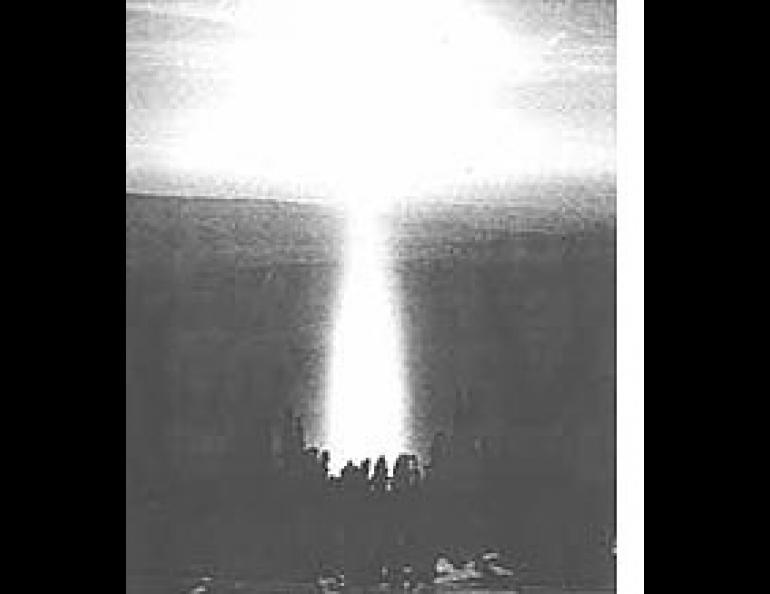
Sun Pillars
The northern atmosphere produces many astonishing optical effects. One reason for this is that there is a strong temperature gradient and marked stratification of air layers. These conditions cause bending of light rays from distant objects, often leading to bizarre distortions and mirages.
Another reason is that the polar air is often charged with tiny crystals of ice--diamond dust--that fall in showers, sometimes even from clear skies. These are not visible to the naked eye except when lighting conditions are right, and the low sun angle in the north makes for the right conditions more often than can happen at lower latitudes.
Arcs, halos and "sun dogs" around the sun are familiar phenomena that are caused by the passage of light rays through tiny prismatic ice crystals shaped like chopped-off portions of a pencil. These rays are bent, or refracted, at certain critical angles that give rise to these apparitions.
If the crystals are very short, they have the appearance of six-sided plates, and they flutter downward like leaves. This results in their flat sides oscillating about the horizontal plane, and the "sun pillars" which they produce are the result of light being reflected off their fluttering surfaces, rather than passing through them.
Sun pillars are most commonly seen when the sun is low. If the pillar is above the sun, the light is being reflected off the bottoms of the crystals. From high vantage points, sun pillars can sometimes be seen extending below the sun. In this case, the light is being reflected from the crystals' tops.
Other bright sources of light--the moon, headlights, street lamps--can also produce light shafts. Whereas sun dogs or halos are refracted light and may produce colors like a rainbow, light shafts are always the color of the primary light source. This is true because reflection alone does not break the light up into its component colors.





